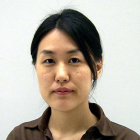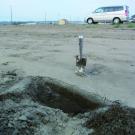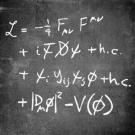Research Interests: Physical properties of rare-earth compounds and uranium compounds under pressure
I'm interested in magnetism and superconductivity of cerium compounds and uranium compounds, especially in the system called heavy-electron or heavy-fermion. Heavy electrons (fermions) mean electrons with a heavy effective mass. This is one of the hottest research field of the condensed-matter physics in which many interesting phenomena have been found. The effective mass of electron is not the electron rest mass but the value to be inversely proportional to electron mobility in the material, for example, we can say that electrons in insulators have an infinity mass because electrons cannot move by electric fields. In fact, heavy-fermion materials are metals in which electrons have a mass more than 10-1000 times larger than its rest mass. Properties of these metals are different from ordinary metals. Strong Coulomb repulsion among electrons prevent them moving freely, so we can say they have heavy electron mass in this system.
One of the most fascinating phenomena in the heavy-fermion system is superconductivity. Every heavy-fermion compound with superconductivity shows its own characteristic properties. We have noticed they do not tell us whole mechanism of their superconductivity yet. Furthermore, a mysterious group of compounds called pressure-induced superconductor exist in this system, which means non-superconductor at ambient pressure shows superconductivity only under high pressures.
We use a unit of GPa (billion pascals) for high pressures in our experiments. 1 GPa is almost equal to 10,000 atm. A maximum of pressure on the earth is only a 0.1 GPa at the bottom of the deepest sea trench, so you can hardly imagine 1 GPa in your daily life. (The pressure in the center of the earth was calculated as 360 GPa, for your reference.) We use various apparatuses for pressure measurements, for example the apparatus called pressure cell (Fig. 1), with improving them at every experiment.
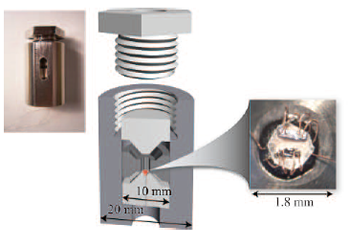
Fig. 1: the pressure cell for our experiment
Current topics of superconductivity: Pressure-induced superconductor in heavy fermion system
Superconductivity was found by Kamerlingh Onnes in 1911 in Hg (mercury). This is a truly great discovery in physics and also expecting for technological application, but we must say this phenomenon is relatively usual among metals in the periodic table, in fact, Al (aluminum) and Pb (lead) show superconductivities, as well as many pure metals.
The theory named BCS-theory presented in 1957 could explain experimental results of superconductors at some extent. Several decades later, discoveries of other types of superconductivity were reported, such as organic superconductor in 1980 and cuprate superconductor called high-temperature superconductor in 1986, but these cannot be fully explained by the BCS-theory. By these discoveries, scientists realized that there are many types of superconductors which can possibly be found by themselves.
In 1979 they were very surprised at the news that superconductivity was found in a heavy-fermion compound \(CeCu_2Si_2\) which had thought as non-superconductor because of strong repulsion among heavy electrons.
After \(CeCu_2Si_2\), superconductivity of \(CeCu_2Ge_2\) was found at the certain range of pressure, which means we can control the appearance of superconductivity when we decrease inter-atomic distances by applying pressure. Pressure-induced superconductors of the same kind were found in cerium compounds, moreover some found in uranium compounds.
The measurement under high-pressure is one of the most difficult experiment in the all methods in solid state physics.
When we apply pressures by pressure-cell as noted above, we also have to cool the cell to very low temperature to measure physical properties of samples. The smaller space you apply pressure to, the higher pressure you reach, which means you have to handle very tiny samples. It takes time to solve the problems of how to put wires to tiny samples and of how to apply high pressures with keeping homogeneity (equal pressures for any directions). Even when we succeeded to start measurement, we are always afraid that wires or pressure cells get broken by low temperatures. We always need patience, endurance, and boldness sometimes. I have been absorbed by hunting for new pressure-induced superconductor since when I was a Ph D student. I found some superconductor e.g. Ce$_2$Ni$_3$Ge$_5$ after 5-year research on many samples actually (Fig. 2).
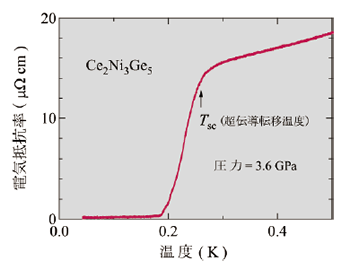
Fig. 2: Pressure-induced superconductivity in Ce$_2$Ni$_3$Ge$_5$
When you study physics, you have to make basis of knowledge step by step. It might be unexciting or boring to some people. To be honest, only once or twice in several years I felt completely happy in my laboratory. Nevertheless, I could forget all of the troubles and difficulties when I discovered something new. Moreover, science has attracted me in another way. While we have to always compete with rivals in a global researching field, we can talk over common subjects as friends even if we met for the first time.
You can do anything in science which always needs powers of young generations. I hope you would be interested in our field and join us soon!
